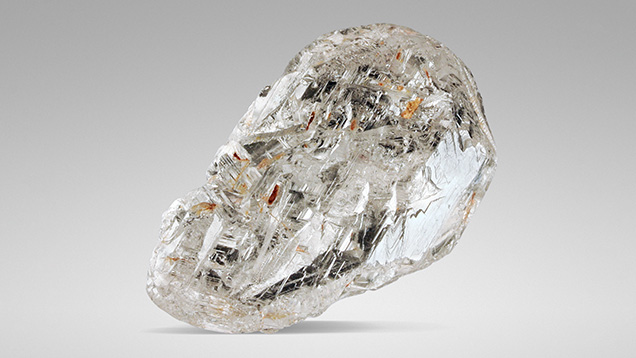Phenakite as a Diamond Imitation

Only then did I remember a natural crystal of phenakite, sold as diamond, that I tested a few years ago. It was very similar to natural rough diamond, but instead of typical trigons, it had a surface covered by many rhombs. But its thermal conductivity was the same as diamond’s, and therefore it was a plausible diamond imitation for a mineral or gem dealer without knowledge of crystallography. When I remembered this, the identification was easy—the refractive index of the loose cut stones was 1.655–1.670, and the Raman line matched very well with phenakite. And upon further examination, the stones appeared doubly refractive in the microscope and polariscope.
Phenakite is trigonal Be2SiO4, colorless, and similar to beryl. Normally it forms hexagonal prismatic crystals that look very different from diamond. Nevertheless, some crystals from Nigeria are irregularly developed (figure 2) and could be mistaken for a rough diamond without careful examination, especially if mixed with real diamonds.

Figure 2. Natural phenakite crystal from Nigeria, width 38 mm. Photo by J. Hyršl.
Cut stones are quite rare and well known only to collectors of rare gemstones. Distinguishing a cut phenakite from diamond is quite easy when one can measure refractive index, see a double refraction in the polariscope or microscope, or calculate weight from measurements. Much more difficult would be phenakite set in jewelry, where it can be very difficult to measure RI. Cut phenakite has much lower brilliance than diamond, of course, but can resemble low-quality cut diamonds.


